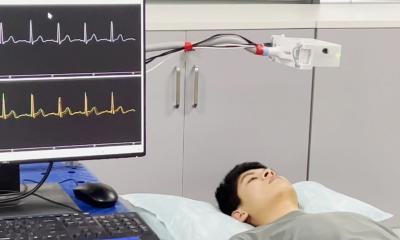A heart for jellyfish
In a paper published in ”Nature Biotechnology” on the 22nd of July of 2012 Harvard researchers explain how making a jellyfish from rat DNA can help to solve cardiac problems.


Can you build a jelly fish with the DNA of a rat? “Morphologically it’s a jellyfish, functionally it’s a jellyfish, genetically it’s a rat”, that how Kit Parker, a biophysicist at Harvard University describes the jellyfish cyborg which he co-created, in an interview with “Nature”. Parker’s team reverse engineered the jellyfish’s biological form and function which requires a hierarchical design over several orders of space and time.
Parker’s lab works on creating artificial models of human heart tissues for regenerating organs and testing drugs. Jelly are ideal animals to research when attempting to find new way of solving cardiac problems On a basic level, their function is similar to that of a human heart - they use a muscle to pump their way through water.
Making an Animal
According to the authors of the report first published Nature Biotechnology under the title : “A tissue-engineered jellyfish with biomimetic propulsion” their technology will eventually lead to the harvesting of cells from one organism and rearranging in a way which allows them to be user for bioengineered products for use in humans. Think of a heart pacemaker without battery, for example.
For the “Medusoid” The Harvard researchers made use of recent advances in the mechanistic understanding of biosynthetic compound materials, computer-aided design approaches in molecular synthetic biology, traditional soft robotics as well as and increasing aptitude in generating structural and chemical microenvironments that promote cellular self-organization. It’s this combination that fueled the crucial enhancement in the ability to recapitulate s hierarchical architecture in engineered biological systems.
The breakthrough shows that it’s not enough to just mimic nature: it’s crucial to concentrate on function. ”The jellyfish provides a design algorithm for reverse engineering an organ's function and developing quantitative design and performance specifications,” said Parker in the interview. The same overall design strategy could be applied to reverse engineer muscular organs in the human body.
Part Rat, Part Machine
Caltech graduate student Janna Nawroth performed the majority of the experiments. She began by mapping every cell in the bodies of juvenile moon jellies (Aurelia aurita) This taught her how they swim. A moon jelly's bell consists of a single layer of muscle, with fibres that are tightly aligned around a central ring and along eight spokes.
Nawroth created a structure with the same properties by growing a single layer of rat heart muscle on a patterned sheet of polydimethylsiloxane. When an electric field is applied across the structure, the muscle contracts rapidly, compressing the Medusoid and mimicking a jellyfish’s power stroke. The elastic silicone then pulls the Medusoid back to its original flat shape, ready for the next stroke.
Octopus, anybody?
Parker said to Nature his team was taking synthetic biology to a new level. “Usually when we talk about synthetic life forms, somebody will take a living cell and put new genes in. We built an animal. It’s not just about genes, but about morphology and function.”
The next step for Parker’s team is a Medusoid using human heart cells. The researchers have filed a patent for use of their design as a platform for testing drugs. “You’ve got a heart drug?” says Parker. “You let me put it on my jellyfish, and I’ll tell you if it can improve the pumping.” In parting, he promised the Nature interviewer with tongue in cheek that he had a whole tank of stuff there and that an octopus could be made “on order.”
24.07.2012











